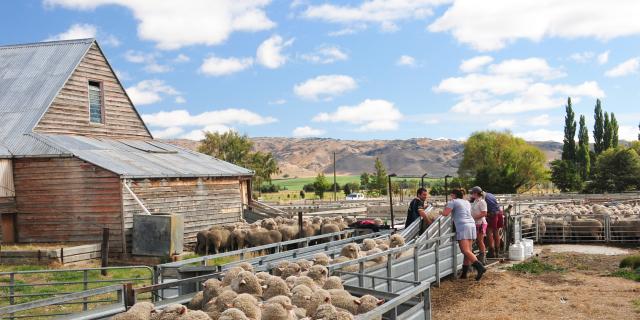Beef + Lamb New Zealand (B+LNZ) is encouraging farmers to body condition score their ewes at least six weeks out from mating to help maximise conception rates.

Body condition scoring ewes has been found to be a driver of profitability in top performing sheep flocks.
Dan Brier, B+LNZ’s General Manager Farming Excellence, says that the biggest percentage jump in scanning percentage will come from reducing the number of poor condition ewes at mating.
“It is these poor condition ewes that bring down the overall performance of the flock.”
Ideally, ewes should be going to the ram at a Body Condition Score (BCS) of between 3 and 4.
He says it is the percentage of the ewe flock below Body Condition Score (BCS) 3 at mating and lambing that is the single most important factor influencing the profitability of a ewe flock.
Pre-mating
By preferentially feeding ewes that have a BCS below three (they may require supplementary feed) in the lead up to mating, their body condition and lambing percentage can be improved.
It is also recommended that a faecal egg count is carried out on these low condition score ewes as they may require a drench.
Mr Brier says research has shown that lambing percentages increase by 6–10 per cent for every extra unit of body condition score at mating. The flushing effect may provide an additional 5–10 per cent.
Ewes need 1.0-1.3kgDM/head/day of average to good quality feed just to hold body condition during mating and early pregnancy.
Ideally, the ewe mob should be rotated rapidly on to pasture that is 5–6 cm height. Grazing below 3 cm or 1,500 kg DM/ha will result in loss of body condition and lower lambing rates.
More information
- BCS online learning module
- Factsheet: Condition scoring at flushing pays dividends at lambing (PDF, 747 KB)
- Resource book: Ewe body condition scoring (PDF 1,604 KB)